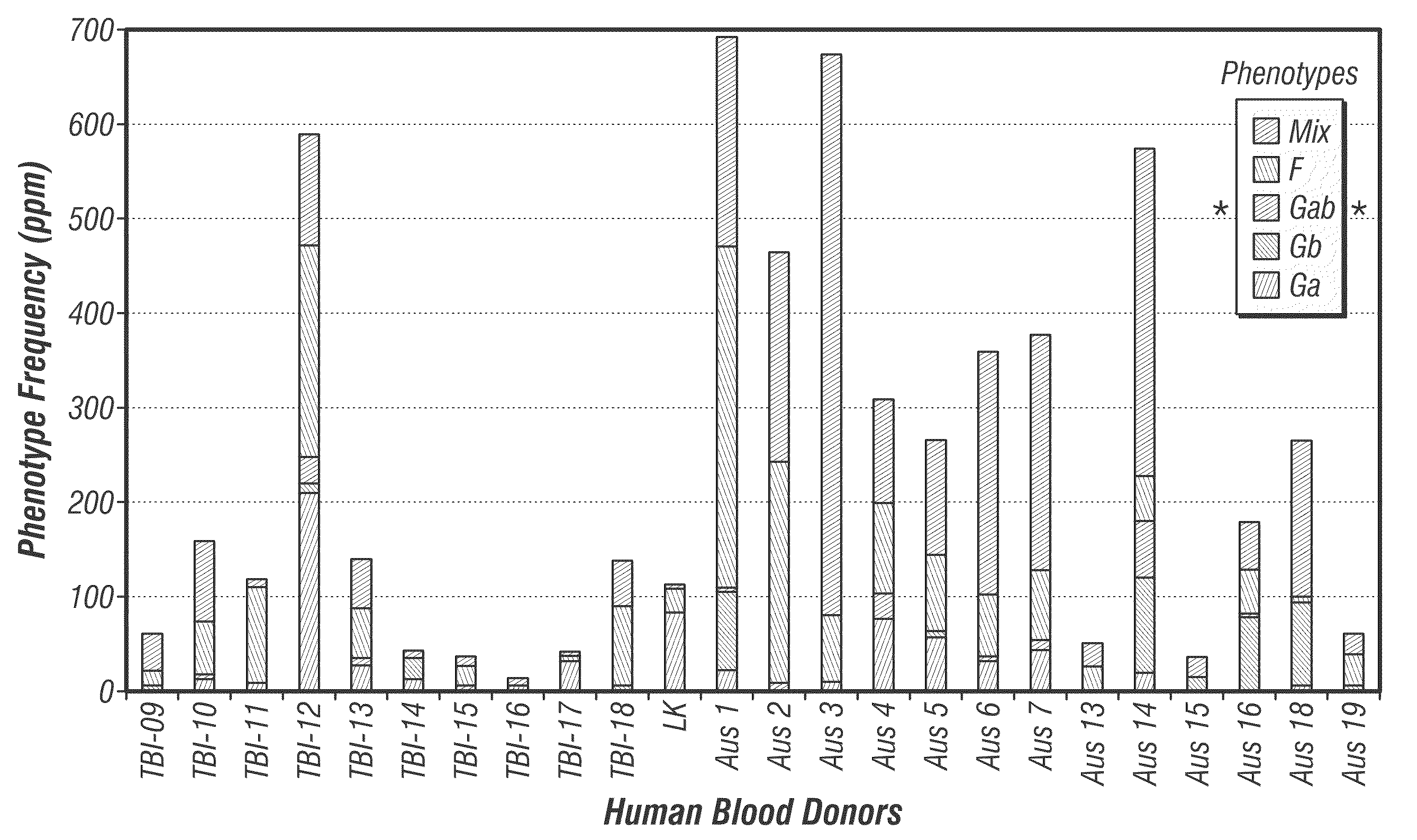Anti-rsv g protein antibodies
a technology of g protein and antibody, applied in the field of antirsv g protein antibodies, can solve the problems of inability to effectively prevent rsv by vaccination, inability to effectively neutralize antibodies directed to g protein, and general impracticality of passive immunization with g protein antibodies, so as to minimize the chance of immunological rejection, the affinity of g protein is high, and the effect of potent neutralizing ability
- Summary
- Abstract
- Description
- Claims
- Application Information
AI Technical Summary
Benefits of technology
Problems solved by technology
Method used
Image
Examples
example 1
Cloning and Humanization of 131-2G
[0061]Cloning and sequencing of mAb 131-2G. Total mRNA was extracted from 131-2G hybridoma according to the manufacturer's directions (RNeasy™ kit: Qiagen Santa Clarita, Calif.). Seven family-specific 5′ VγFR1 primers designed to target the VH1 through VH7 gene families of Igγ, and one consensus 3′ Cγ1 primer were used to amplify and sequence the variable region of 131-2G heavy chain. One consensus 5′ Vk primer was designed to amplify each of the Vk families, and one reverse primer specific to the kappa constant region were used to amplify and sequence the kappa light chain. The VH and VL transcripts were amplified from 100 ng total RNA using reverse transcriptase polymerase chain reaction (RT-PCR).
[0062]Two PCR reactions were run for the 131-2G hybridoma: one for light chain kappa (κ) and one for gamma heavy chain (γ1). The QIAGEN® OneStep RT-PCR kit was used for amplification, (Qiagen Catalog No. 210212). The extracted PCR products were directly s...
example 2
Isolation of Human B Cells Secreting Antibody to RSV-Ga / Gb
[0067]Peripheral blood mononuclear cells from 40 adults with confirmed RSV infection were surveyed for human B cells producing anti-viral antibodies. Subjects with the desired antibodies against RSV attachment G protein were used for cloning of anti RSV-G specific mAbs. The result of the survey was that ˜10% of the subjects had a frequency of the desired cells greater than 1 in 100,000. Even those with a lower frequency, however, were of interest and in fact the highest affinity antibody identified came from a donor with a very low frequency of the desired B cell type, ˜1 ppm.
[0068]To accomplish the survey and recovery of rare favorable cells, we used the previously described CellSpot™ technology. The CellSpot™ assay method effectively shrinks an ELISA equivalent assay down to a virtual well of near single cell dimensions by capturing secreted IgG from a single cell as a footprint in the vicinity of the cell. As a result, mil...
example 3
Cloning of Human Antibodies to RSV-Ga / Gb
[0074]Amplification of rearranged Ig Heavy and Ig Light genes from positive ELISA wells was accomplished using semi-nested polymerase chain reaction (PCR). For amplification of a priori unknown V-gene rearrangements, a collection of family-specific V-gene primers was constructed, which recognize nearly all V-gene segments in the human Ig Locus. The 5′ primers were used together with primer mixes specific for the Cγ, Cκ and Cλ gene segments. The clonality of the limiting dilution RSV-G specific B cells was unequivocally determined by sequence comparison of V-gene amplificates from distinct progeny cells, and the amplified full length V-gene rearrangements were cloned into IgG expression vectors. This method was also useful to address additional issues, such as V-, D-, and J-gene usage and the presence and pattern of somatic mutations.
[0075]Methods. Total mRNA from the isolated human B cells was extracted using a commercially available RNA purif...
PUM
| Property | Measurement | Unit |
|---|---|---|
| time | aaaaa | aaaaa |
| temperature | aaaaa | aaaaa |
| pH | aaaaa | aaaaa |
Abstract
Description
Claims
Application Information
 Login to View More
Login to View More - R&D
- Intellectual Property
- Life Sciences
- Materials
- Tech Scout
- Unparalleled Data Quality
- Higher Quality Content
- 60% Fewer Hallucinations
Browse by: Latest US Patents, China's latest patents, Technical Efficacy Thesaurus, Application Domain, Technology Topic, Popular Technical Reports.
© 2025 PatSnap. All rights reserved.Legal|Privacy policy|Modern Slavery Act Transparency Statement|Sitemap|About US| Contact US: help@patsnap.com



